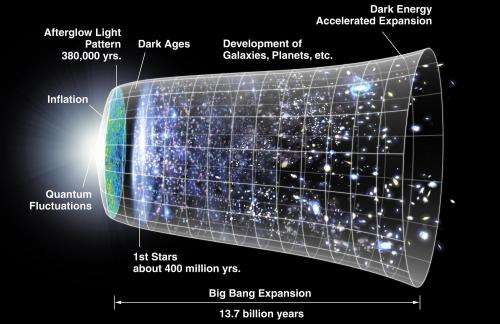Galactic winds slow new star formation

Scientists have created computer simulations of events soon after the Big Bang to better understand how stars today are being formed.
Researchers have formed the clearest picture yet of massive explosions that controlled the creation of galaxies, including our own, and continue to influence star formation today.
The findings confirm a long-held theory about the after-effects of these spectacular explosions called supernovae, and how they slow down the formation process.
Blast waves
Scientists at Edinburgh say supernovae trigger powerful gusts of wind that slow the rate at which gas for new stars pours into developing galaxies.
The team used a supercomputer to create simulations of the dark matter, hydrogen and helium formed post Big Bang – all key elements of galaxy formation. They compared these with measurements of the amount of hydrogen that surrounds galaxies.
Researchers found higher levels of hydrogen outside galaxies than expected, suggesting that violent winds produced by supernovae slow down the flow of gas into galaxies.
Black hole impact
However, the simulations were unable to reproduce the hydrogen around the most massive galaxies, which contain quasars – the most energetic objects in the Universe.
The team suggests that quasars may have an even greater influence than supernovae on star formation, by producing enormous jets of gas fuelled by black holes.
The study is published in the journal Monthly Notices of the Royal Astronomical Society by Oxford University Press. The research was carried out in collaboration with scientists at the Universities of Cambridge and Nottingham.
"Our simulations provide highly accurate descriptions of the properties of dark matter and gas found between galaxies. Understanding how galaxies form presents new challenges because the physical processes involved are much more complex. Our results suggest we are on the right track," says Professor Avery Meiksin.
Journal information: Monthly Notices of the Royal Astronomical Society
Provided by University of Edinburgh


















